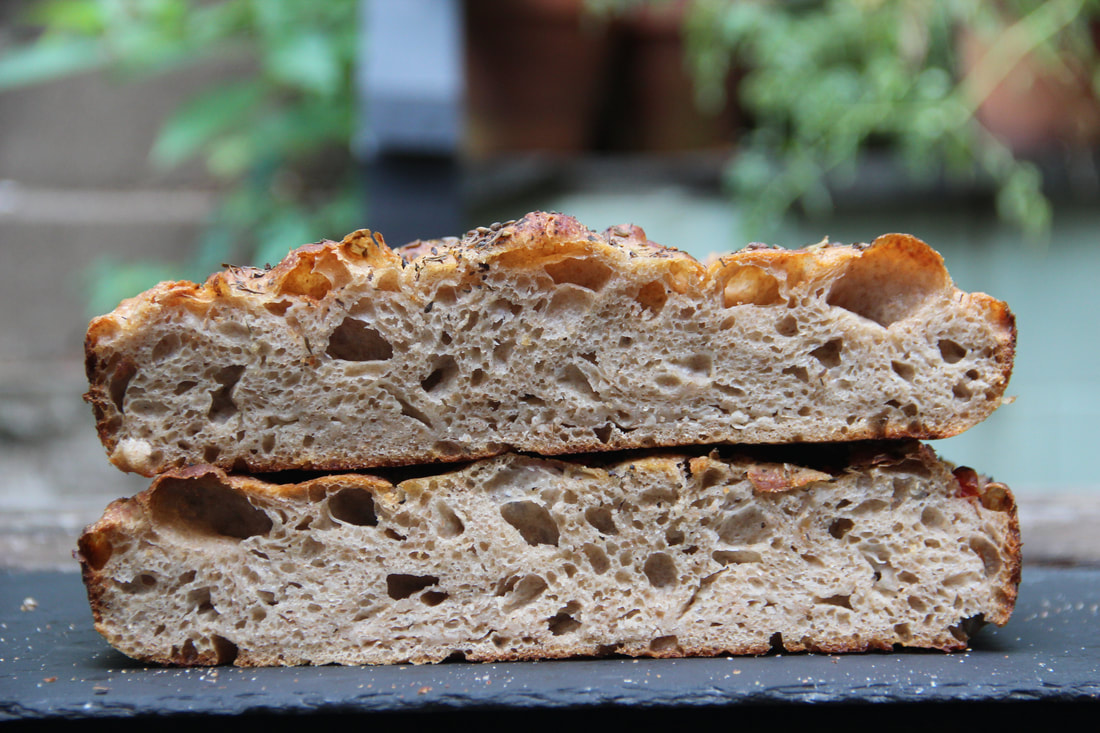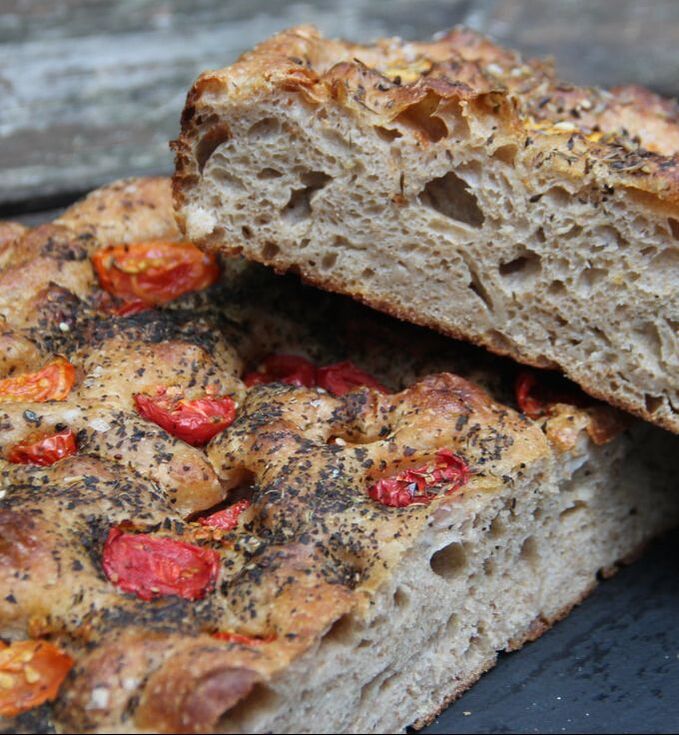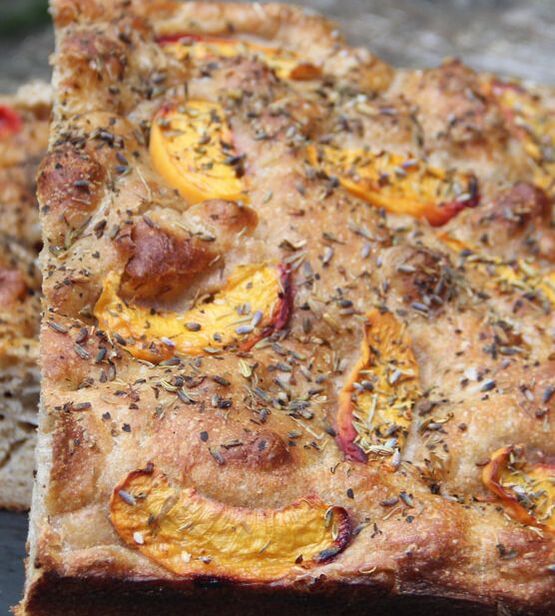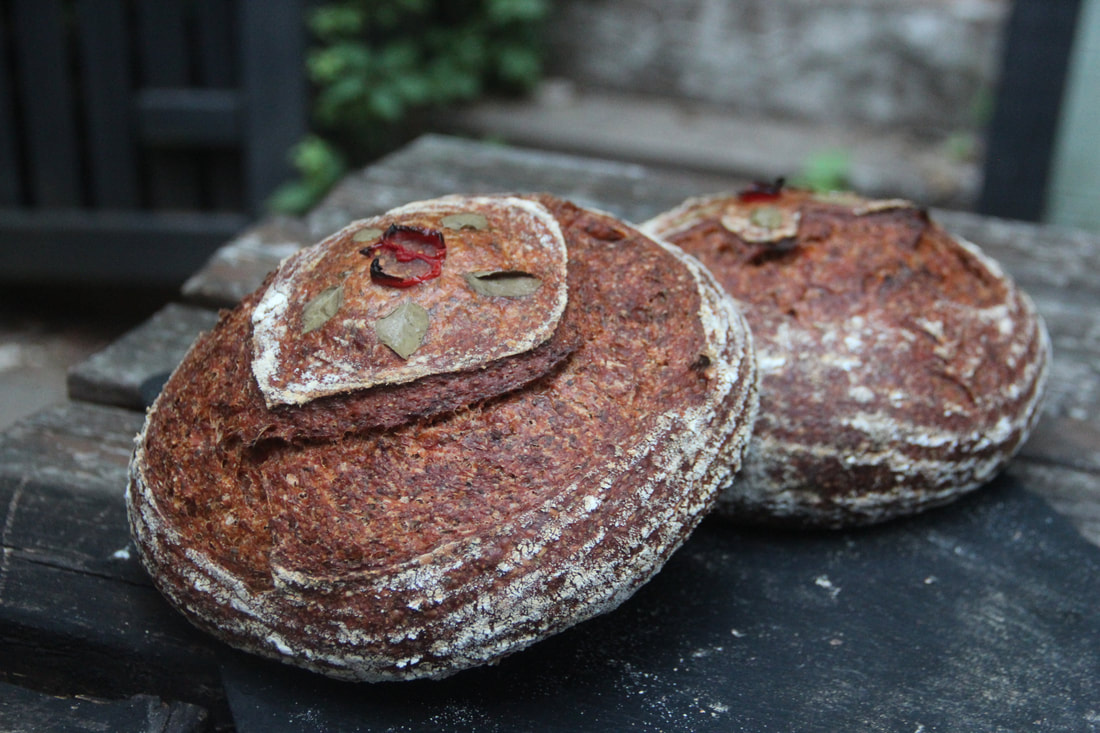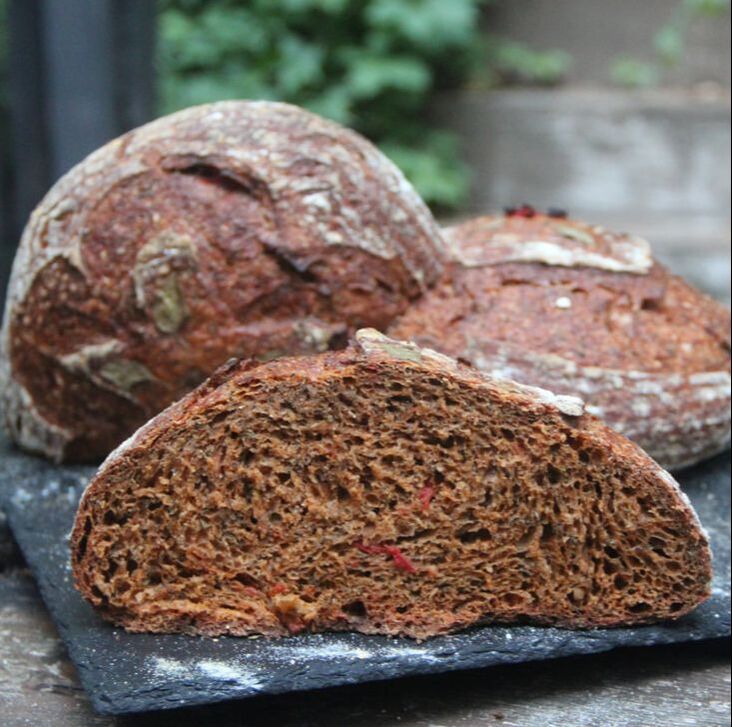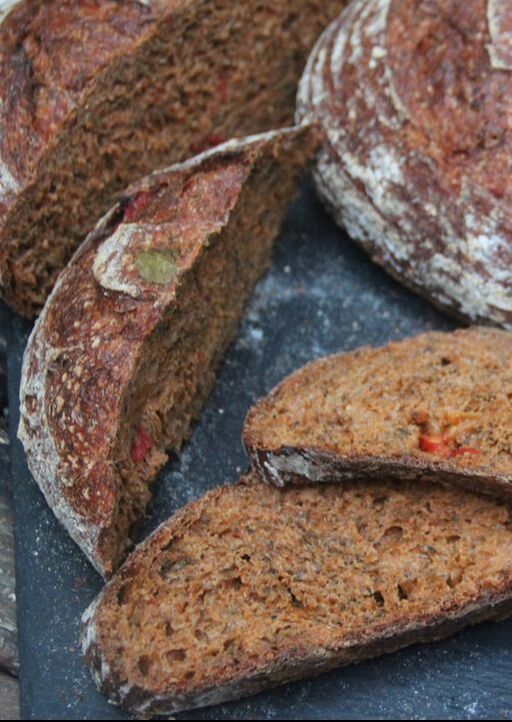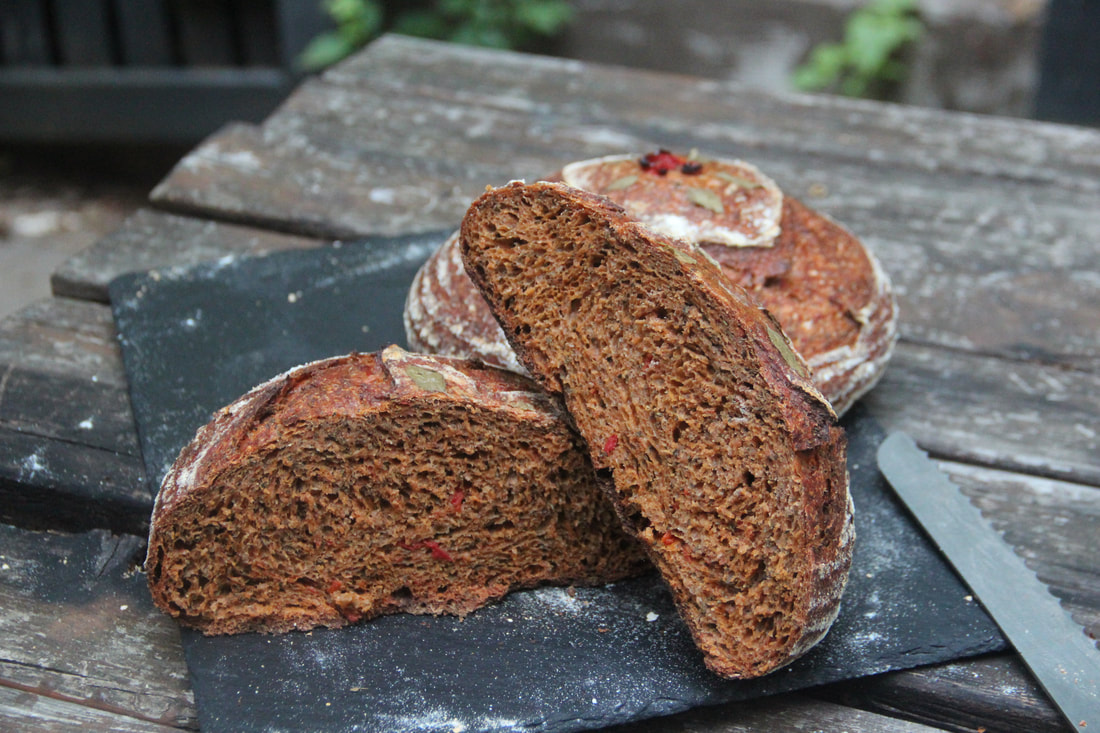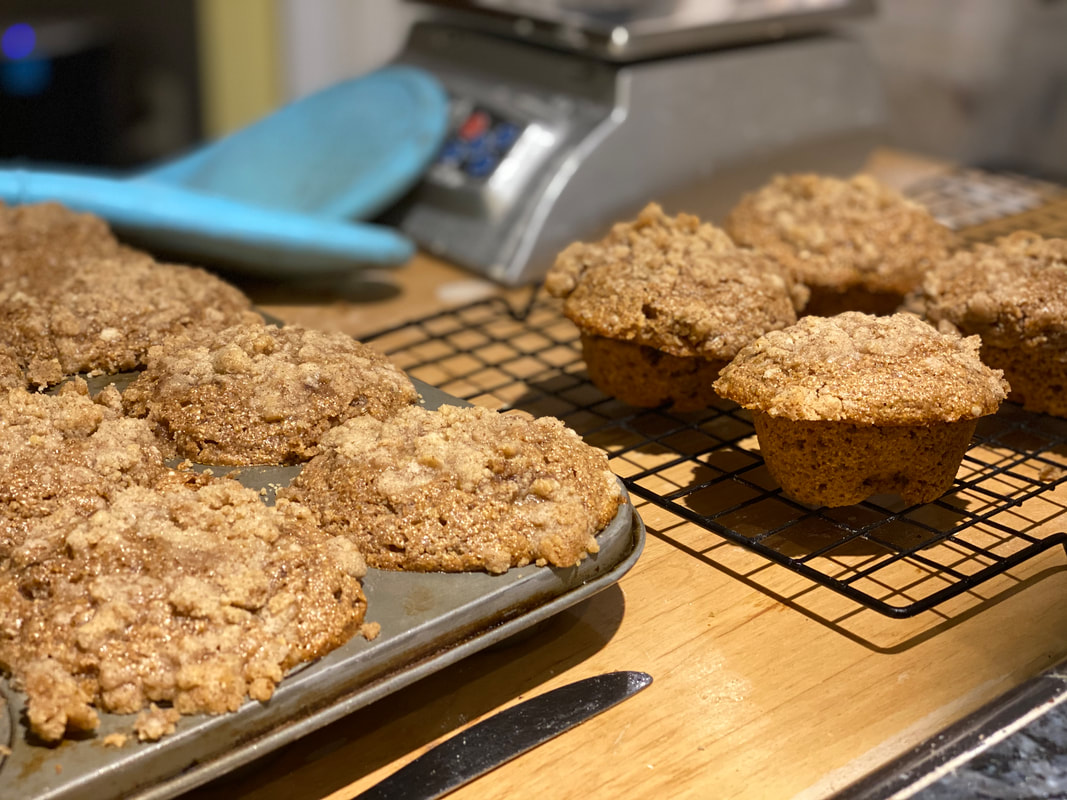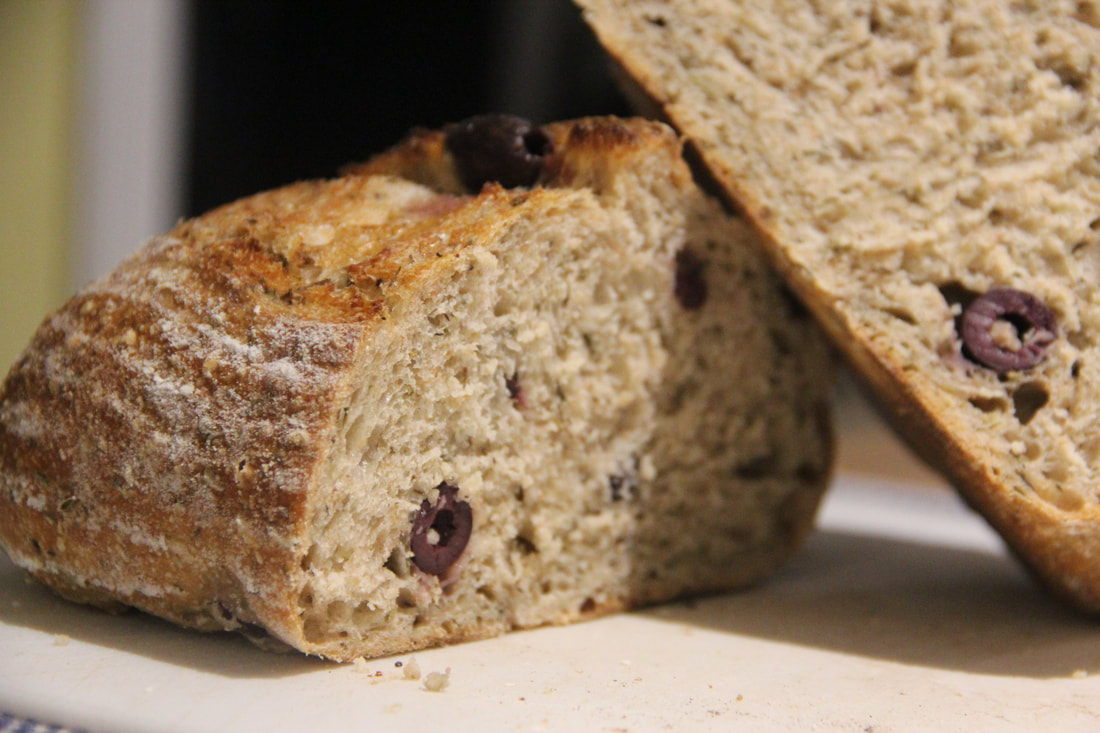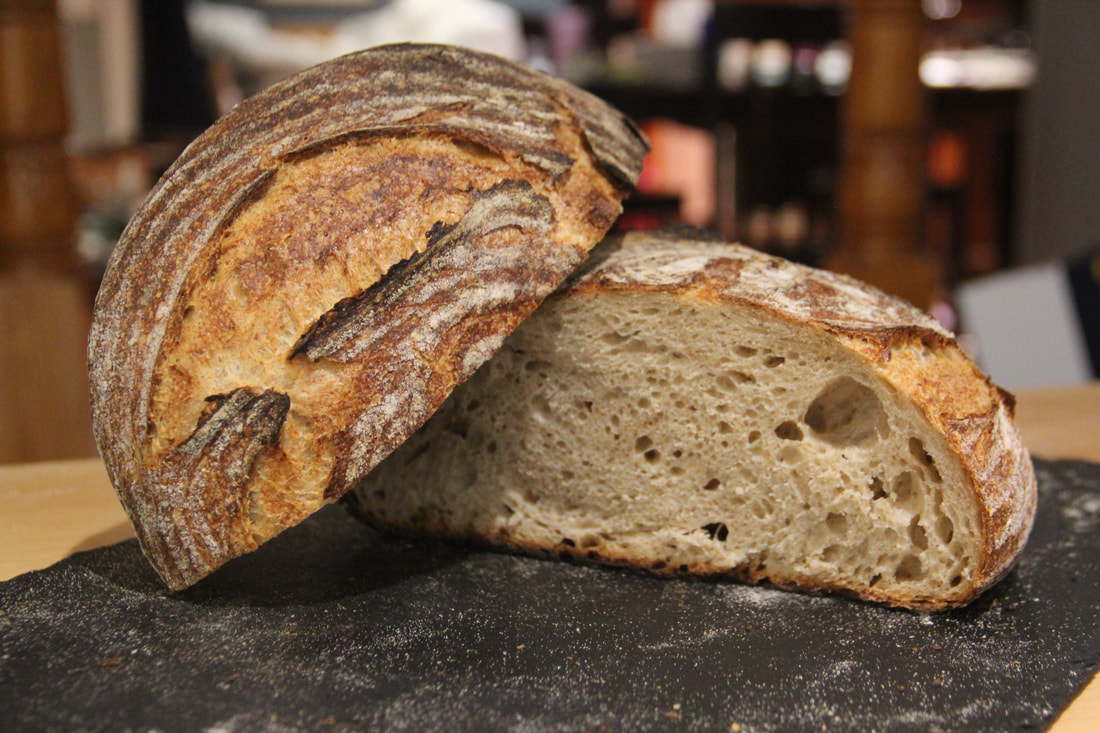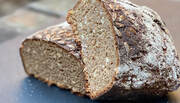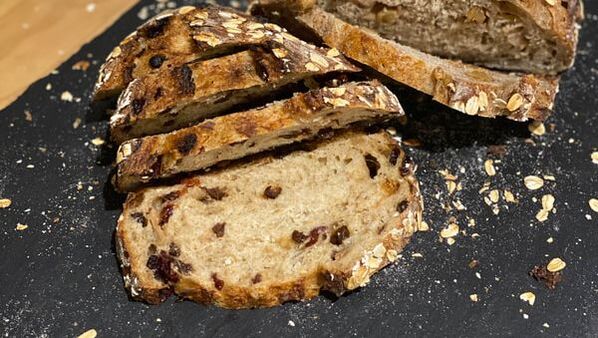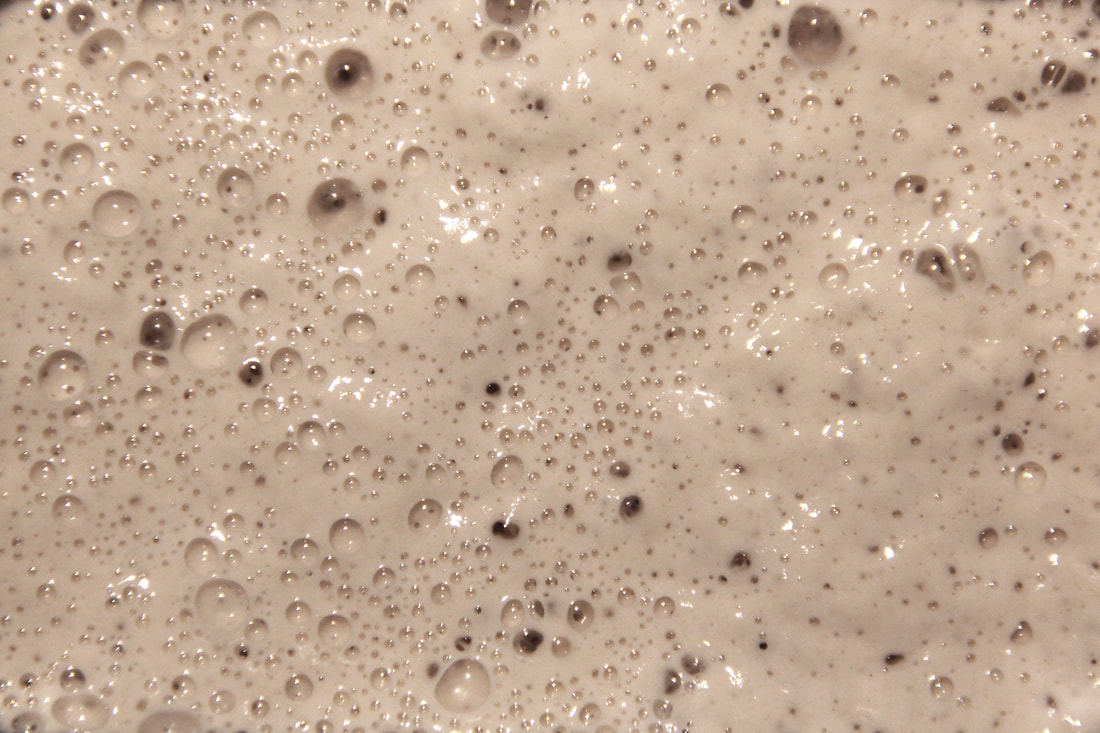|
SOURDOUGH FOCACCIA RECIPE This is such a simple, forgiving, and adaptable recipe that I very nearly brushed off writing it up. Focaccia is a pleasure for me to make because of its versatility and variability. Savory or sweet; two-day fermented or same-day baked; in a round or spread out in a pan; it's going to be delicious just about any way. I'll note the plentiful options and side-routes you can take in the process along the way! This recipe yields one full pan (approx. 9 x 13 in) of focaccia or two rounds (approx. 10 in diameter) of focaccia, and can be topped with just about anything you desire. Tip: Make sure your toppings are sliced thinly, or else they can weigh down the focaccia and lead to soggy pockets. My current favorites include coarse sea salt, garlic, and rosemary; cherry tomatoes and basil; peaches, herbes de Provence, and goat cheese; and pesto and nuts.
SOURDOUGH FOCACCIA: TOTAL FORMULA BAKERS PERCENTAGES
SOURDOUGH FOCACCIA PROCESS
Mix
Final rise
Bake
0 Comments
TOMATO BASIL SOURDOUGH RECIPE This naturally leavened, red-tinged loaf is the epitome of summer. Whole rye gives it a denser crumb and a delicious tang to bring out the acidity of the tomatoes and the freshness of the basil. And paprika gives it a flavorful zing and deepens its natural color. Pair this loaf with some bruschetta or a Caprese salad or even just olive oil and herbs, and you're in for the perfect summer meal. Recipe yields 2 1-kg loaves. TOMATO BASIL SOURDOUGH BAKER'S PERCENTAGES (a universal, slightly more technical way to share recipes that is explained here, but you can also just ignore this)
TOMATO BASIL SOURDOUGH PROCESS
Mix
|
|

